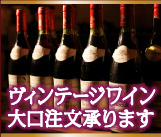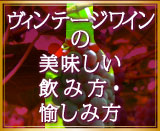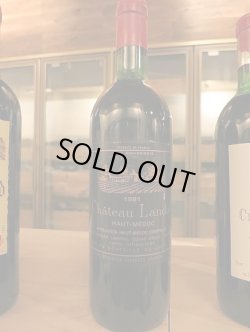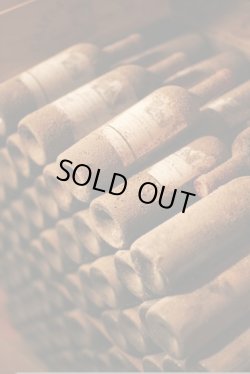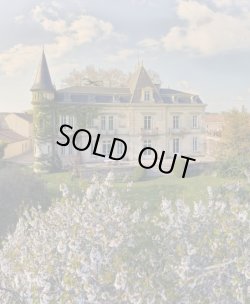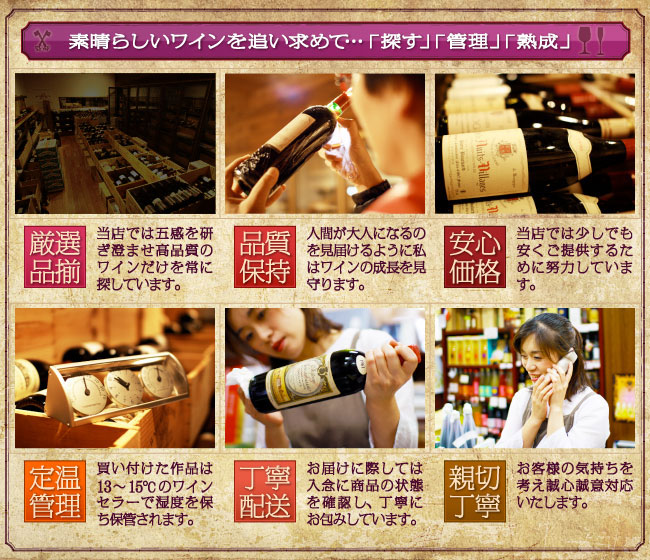|
History: Listed as wine growing estate in 1881, Château Landat was
already registered as cru bourgeois in 1908 and was famous for
producing charming and elegant wines. In the mid-seventies, Gabriel
Fabre purchased the estate from Mr. Normandin, the former owner.
Location and soil: The vineyard is located partly in the northern part
of CISSAC and partly on the plateau of VERTHEUIL.
Topsoil consisting of clayey gravels resting on clayey subsoil.
Vineyard / Grape varieties: Area : 14 hectares.
Grape varieties : 60% cabernet sauvignon, 35% merlot and 5% petit
verdot. Average age of vines: 30 years.
Vineyard managment: Leaf thinning, midrow grassing. Manual and
mechanical harvesting to optimize the maturity of the grapes.
Many vestiges from various periods have been discovered on the estate:
- A 35 000-year old tumulus surrounded by a circular moat. The base of
the tumulus was supported by retaining walls consisting of regularly
carved stones. In the center, bones and Bronze Age potteries were
buried in a rather deep ash layer.
- A more recent dolmen consisting of 6 upright stones supporting a
large flat rectangular-shaped horizontal capstone 2.50 m long and 1 m
wide. Inside this dolmen, two human skeletons with a horse and dog
skull have been found.
- a prehistoric flint stone-carving workshop. A 22-cm long flint
dagger has been collected. Many scraper and knife splinters, axe and
arrow point fragments have been found.
- A 27-m long x 14-m wide gallo-roman residence including a lot of
rooms. Considering the foundations of this « villa romana » which have
been fully investigated, our wine-growing estate can be regarded as
very old. Pottery fragments and Roman coins have also been found in
the foundations. All these findings reveal that, 2000 years ago, the
terroir of our Domains was already considered by the Romans as perfect
for producing high-quality wines.
(Revue de la société Archéologique de Bordeaux, 1891.)
ARCHITECTURE AND BUILDINGS: EVIDENCE OF THE PAST
A middle-age building with adjacent farmsteads was erected at the
location of the current castle. ; Cellars and prison cells can still
be found in the oldest parts of the building.
The skeleton of a very tall warrior lying on side has been discovered
in one of these cells. He was holding in his hands a sword bearing the
name of « London » engraved on the blade. Obviously, his body had been
transpierced by a 1,05-m long blade. A steel gorget from the armor
this warrior was wearing at the time of his death was hanging around
his neck.
(Revue de la société Archéologique de Bordeaux, 1891.) In the XVIIIth
century, a map dated 1707 by Claude MASSE (1632-1737) official
cartographer of king Louis XIV, shows at the location of Lamothe a
large vineyard close to châteaux Lafite-Rothschilld and
Mouton-Rothschild located on the nearby commune of de Pauillac.
On the same map, the parcels corresponding to the localities La
Tonnelle and Landat in the commune of Vertheuil are planted with
vines. A windmill, which today no longer exists, is shown in the
center of LaTonnelle vineyard.
At the end of the XIXth century, the middle-age castle has been
completely destroyed by a fire. The current neo-renaissance style
castle has been erected at the same location. The building was
completed in 1903.
At the beginning of the XXth century, the property was gambled away in
the Casino of Biarritz by the owner who was also wine merchant in
Bordeaux at that time.
THE SUCCESSIVE OWNERS
The owners have been more or less successful in their undertaking.
In the XIXth century, the property of Lamothe belonged to Mr.
d’Elbauve, also owner of the very beautiful and ancient abbey of
Vertheuil.
At the end of the fifties, the owner gradually gave up the wine
activity. He was convinced that a treasury was hidden in the castle.
He searched it but founded nothing...
When Gabriel Fabre back from Morocco purchased the property in 1964,
wine was no longer produced on the estate.
The 33 hectares of vines making up the vineyard of Château Lamothe
have been planted on limestone and gravelly slopes as from April 1967.
In 1976, Gabriel FABRE purchased the vines of Château Landat in the
nearby commune of Vertheuil. In the Middle Ages, this estate belonged
to the very strong abbey of Vertheuil.
In 1982, Vincent started in the profession by buying the estate of La
Tonnelle whose vineyard belonged to the highly reputed château
Picourneau in the XIXth century. He assisted his father in
wine-growing and winemaking.
After the death of Gabriel FABRE in 1991, his children took over the
management of the estate. Significant works have been undertaken in
the wineries in 1996 and 1999 to improve the winemaking tool. Today,
the rearranged premises offer a quality-working environment with
modern equipment.
Strengthened by experience, Domaines FABRE have extended their range
over the years by buying various estates all located in Haut-Médoc.
Doing so, the aim has always been to enlarge the tasting offer and the
wine range proposed to the customer depending on the opportunities.
TODAY
〜以下、公式ホームページより〜
In 2007, Vincent FABRE and his wife decided to take over the overall
management of Domaines FABRE. Presently, the vineyard includes more
than 92 hectares distributed over three different estates.
Two of their three children consider engaging in the noble professions
of the wine-growing branch. No doubt that the next generation will
ensure the follow-up…
|



